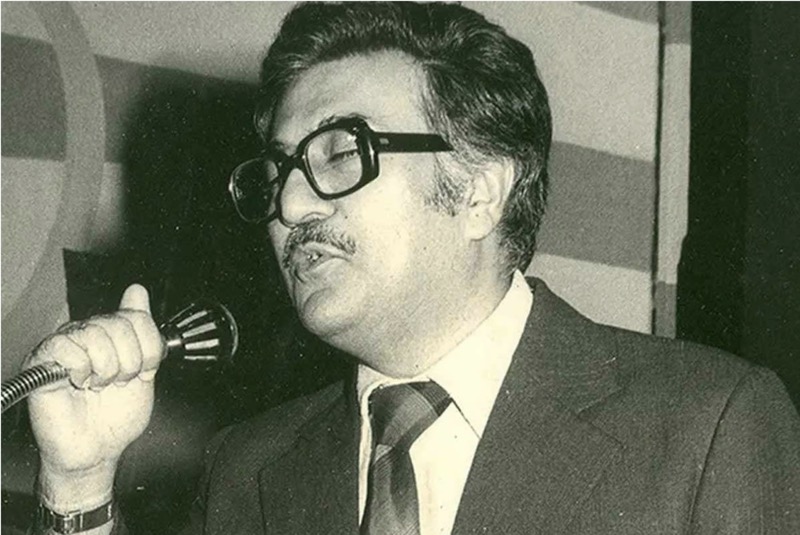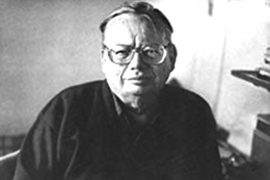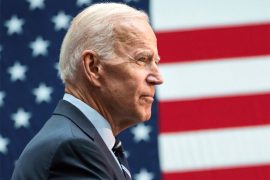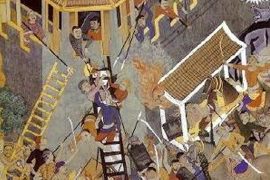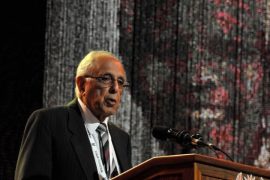It stands to reason that in a David-and-Goliath situation, most ordinary people support the underdog a.k.a. David. When the Goliath in question is backed by those in power and some questionable assertions are made about the ‘value’ of the ‘classical’ and the ‘vulgarity’ of the ‘popular’, David garners even more support.
This in a nutshell is how Radio Ceylon stole a march over All India Radio (AIR) in the 1950s.
The ‘popular’ in this imbroglio was film music, specifically, Hindi film music, and the ‘classical’ was, well, Indian classical music!
In 1952, B.V. Keskar, the Information and Broadcasting Minister in Nehru’s cabinet, took a decision that went on to have momentous and unforeseen consequences. He decreed that all songs aired on AIR would be examined before being aired. He was concerned, he said, about the ‘erotic’ content of many songs.
Keskar had studied in Kashi Vidyapith and had a PhD from the Sorbonne, Paris. A staunch classical music aficionado, Keskar, his Paris days evidently long-forgotten, had come to identify Western popular music with—believe-it-or-not—‘a lower stage of human evolution’! The infusion of Western rhythms and instruments into Hindi film music also caused him much heartburn.
Hereafter, he ordered, popular songs, the bulk of which were film songs, would be aired for only 10 percent of the programme time. Also, if a film song was played, the film’s title would not be announced, since that was advertising. Only the singer’s name would be announced. The lyricist and the music director also did not merit a mention.
Keskar then went about setting up an elaborate system to promote Indian classical music. He created a system of auditions and gradation of artistes. He also propagated a form of ‘light’ non-film music to cater to popular tastes.
The film industry screamed bloody murder! In its August 1952 issue, Filmfare termed Keskar’s decision ‘a calculated blow at the reputation of the Indian film industry, as much as one aimed at ousting film music from the market’. Soon, film producers withdrew the broadcast licences given to AIR for the songs of their films. Film music disappeared from AIR.
And into this void stepped in a nimble player from a neighbouring country which had its ear to the ground and its nose trained to sense opportunity—Radio Ceylon.
Origins
Inaugurated on December 16, 1925, Radio Ceylon was the first Asian broadcasting station. According to broadcast historians, transmitters recovered from a German submarine served as the basis for the founding of Radio Ceylon. Engineers from the Central Telegraph Department in Colombo put together an apparatus from the captured submarine and began experimental broadcasts.
Radio broadcasting was still quite nascent at that point. The BBC had been founded just a couple of years earlier in 1923. The Indian Broadcasting Company, later to become AIR, which initially started off as a private entity, began its operations in July 1927. This made Radio Ceylon something of an early pioneer.
During the Second World War, Radio SEAC (South-East Asia Command) was shifted to Colombo. This improved Radio Ceylon’s geographical coverage as it now had the technology to cover all of South Asia. This was to prove fortuitous in its journey a few years later.
Filling the void
Even before Keskar’s decree, Radio Ceylon ran Hindi programmes, many of them film-based. One such programme, hosted by a good-looking young man whose family had lost everything in the Partition riots, was ‘Lux ke Sitaray’. In this programme, Balraj Dutt, the host, interviewed film actors. A few years later, Balraj went from interviewing stars to becoming one himself. His screen name: Sunil Dutt!
Given Radio Ceylon’s existing listener base and with AIR having shut its doors, Hindi film producers switched entirely to Ceylon without batting an eyelid. Popular at that time was ‘Binaca Hit Parade’ presented by Greg Roskowski, a programme of English pop songs. Listeners now demanded a similar programme for Hindi film songs. In 1952, ‘Lipton ke Sitaare’, a show that featured Hindi film songs began airing and became popular very quickly.
Soon, a new sponsor came into the picture and a new name, destined to pass into legend, was given to the programme: Binaca Geetmala.
Binaca Geetmala: a programme that defined a generation
As the mandarins at Radio Ceylon brainstormed about the programme format, they decided that it needed to become a countdown. To put out the programme week after week, they needed someone who was young and enthusiastic, who would read letters from viewers, tabulate requests and apply his mind to the popularity of songs, based on listener feedback. All this for a princely sum of Rs. 25 a week.
Hameed Sayani was then a producer with Radio Ceylon and his younger brother, Ameen, then a college student, occasionally read out advertisements for the station. He had presented a few episodes of ‘Lipton ke Sitaare’ and had sufficiently impressed everyone. As the programme moved from being one that played songs in no particular order to a countdown, Ameen Sayani took complete charge of the programme. The first countdown programme brought in 200 letters. By the second week, the numbers had swelled to 9,000. In a few months, the number was in the region of 60,000.
When Sayani’s voice came on air every Wednesday at 8 p.m., streets emptied out as listeners awaited with bated breath for the playlist of that week. Sayani recorded his programmes in Bombay (now Mumbai) and the tapes were then flown to Colombo from where they were broadcast.
To gauge the popularity of songs, initially, record sales information was obtained and record store owners were consulted. Since the programme took in requests as well, listeners, tingled by the idea of having their names read on air, sent thousands of postcards with their song requests.
Relative to its size, the most number of requests came from a little town in southern Bihar (now Jharkhand)—Jhumri Telaiya, then a mica mining hotspot. Mica was then a key ingredient in spaceships and defence equipment and the town had very quickly become very prosperous as a result.
A mica mining tycoon from Jhumri Telaiya, Rameshwar Prasad Barnwal, was among the first from the town to write in. Soon others from the town began to, as well, and clubs sprung up all over the town who competed to have the maximum number of requests. These ‘listeners clubs’ (‘shrota sanghs’ was the quaint Hindi moniker) soon sprung up around the country spurred on, by the Jhumri Telaiya example and began to have a say in the countdown.
The Binaca Geetmala was now a cultural sensation. It remained so for many years.
But Radio Ceylon wasn’t only about Hindi programming. Jimmy Bharucha, a Sri Lankan Parsi presented western music. S.P. Mayilvaganam and ‘Radio Mama’ Saravanamuttu were household names in Tamil Nadu during this period, again for the song-based and entertainment programmes that they presented.
Such was the popularity of Radio Ceylon that in 1957, around the time of the second general election, a number of reports in Indian newspapers claimed that candidates contesting for upcoming elections could campaign on the station. The Ceylon High Commission had to quickly issue a press release to the contrary, stating: “Ceylon Radio does not indulge in politics.”
AIR in the dock
Radio Ceylon’s popularity had not gone unnoticed.
In April 1954, Harindranath Chattopadhyay—the poet, playwright, actor and younger brother of Sarojini Naidu who was then a MP—roundly criticised the functioning of AIR in Parliament. He argued that popular music had been excluded from the station’s programmes without any effort made by the government to understand what listeners wanted. In the same session, Sardar Hukum Singh stated tersely that AIR had failed to satisfy the people with its ‘light music’.
Eventually, Keskar had to bow to public demand and the Vividh Bharati service of AIR was introduced to cater to popular taste in 1957. Film music then made a comeback to the national broadcaster.
In time, Vividh Bharati came to occupy the space that Radio Ceylon had created and by the 1970s, most Indian listeners, folks from Jhumri Telaiya included, had switched allegiance to the Indian broadcaster.
Radio Ceylon’s popularity soon became a thing of the past. Binaca Geetmala, though, continued to run on the station till 1988, when it finally shifted to AIR before being taken off the air in 1994.
For close to two decades, though, David had bested Goliath. That memory endures, as does the memory of Sayani’s opening lines:
Ji haan beheno aur bhaiyon. Main aapka dost Ameen Sayani bol raha hoon aur aap sun rahe hai Binaca Geetmala.
-30-
Copyright©Madras Courier, All Rights Reserved. You may share using our article tools. Please don't cut articles from madrascourier.com and redistribute by email, post to the web, mobile phone or social media.Please send in your feed back and comments to editor@madrascourier.com

